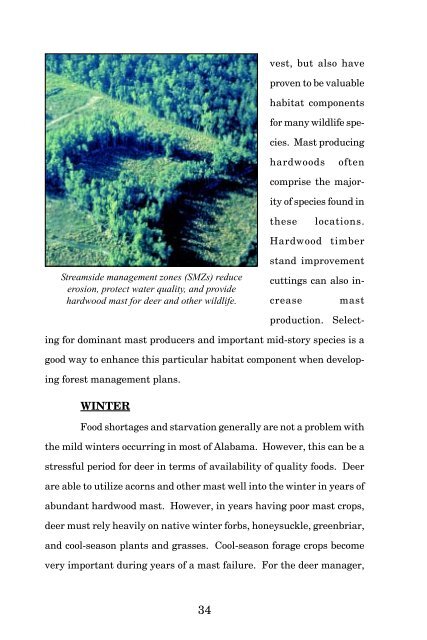Biology And Management Of White-tailed Deer In Alabama
Biology And Management Of White-tailed Deer In Alabama
Biology And Management Of White-tailed Deer In Alabama
You also want an ePaper? Increase the reach of your titles
YUMPU automatically turns print PDFs into web optimized ePapers that Google loves.
vest, but also have<br />
proven to be valuable<br />
habitat components<br />
for many wildlife species.<br />
Mast producing<br />
hardwoods<br />
often<br />
comprise the majority<br />
of species found in<br />
these<br />
locations.<br />
Hardwood timber<br />
Streamside management zones (SMZs) reduce<br />
erosion, protect water quality, and provide<br />
hardwood mast for deer and other wildlife.<br />
stand improvement<br />
cuttings can also increase<br />
mast<br />
production. Selecting<br />
for dominant mast producers and important mid-story species is a<br />
good way to enhance this particular habitat component when developing<br />
forest management plans.<br />
WINTER<br />
Food shortages and starvation generally are not a problem with<br />
the mild winters occurring in most of <strong>Alabama</strong>. However, this can be a<br />
stressful period for deer in terms of availability of quality foods. <strong>Deer</strong><br />
are able to utilize acorns and other mast well into the winter in years of<br />
abundant hardwood mast. However, in years having poor mast crops,<br />
deer must rely heavily on native winter forbs, honeysuckle, greenbriar,<br />
and cool-season plants and grasses. Cool-season forage crops become<br />
very important during years of a mast failure. For the deer manager,<br />
34
















